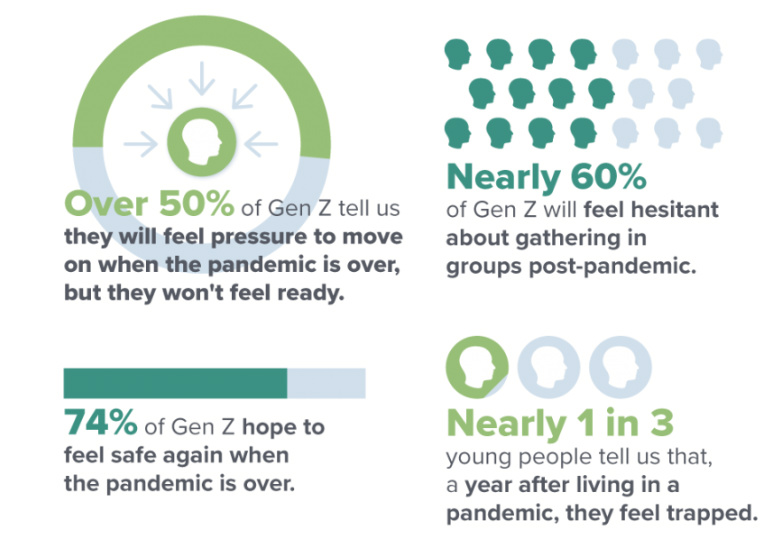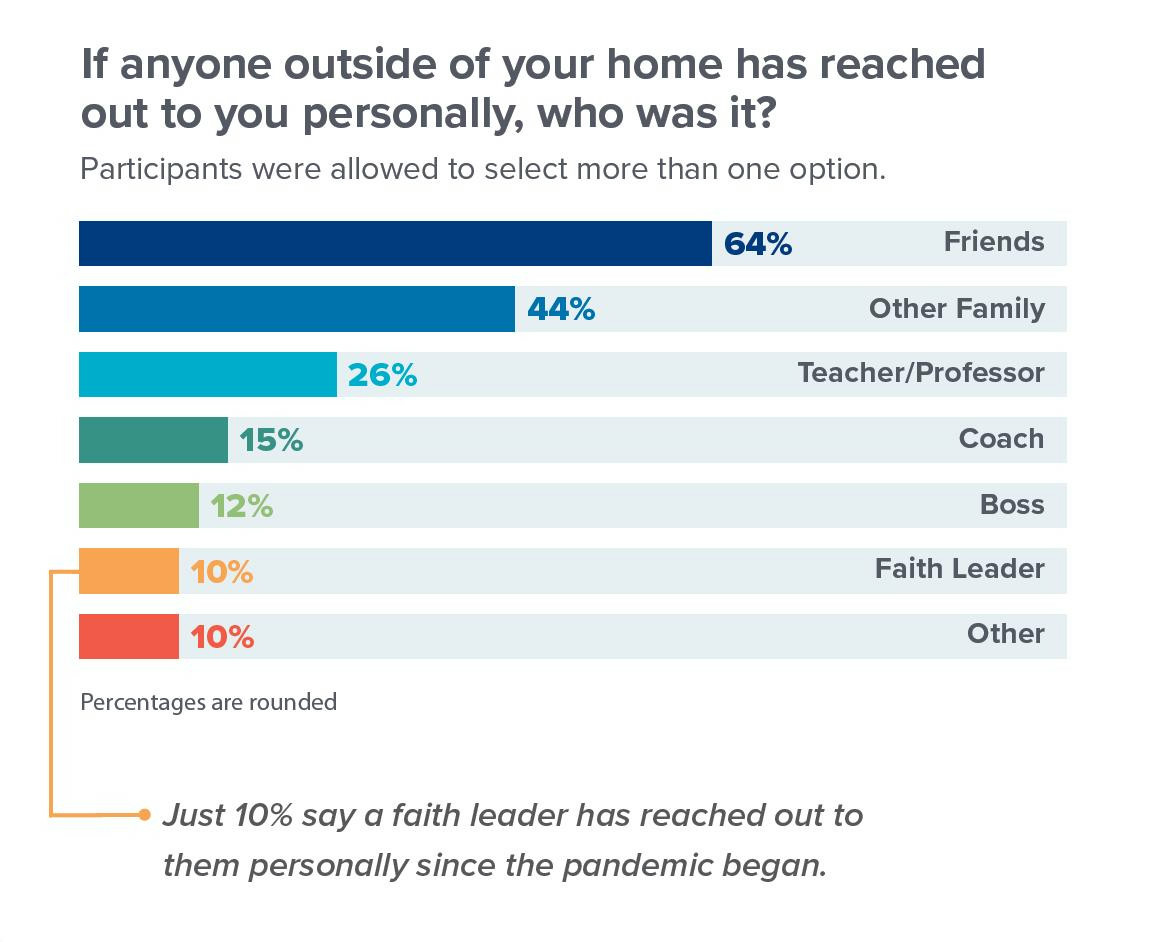Researchers are warning religious leaders, teachers and parents there isn’t going to be a simple “back to normal” approach for young people after the COVID-19 pandemic. Rather, we should all be looking for ways to help them experience “the new normal“.
That’s the argument from Springtide Research Institute, which surveyed 2,500 members of Generation Z (ages 13 to 25) in February, 2021, about their experiences of, and attitudes about, the pandemic.

The “new normal” may look different from the “old normal,” according to Springtide’s research.
It’s not going to be easy for young people to merely pick up where they left off, said Josh Packard, Springtide’s executive director.
“There’s just a whole lot of things that they missed,” he said. “They’re not getting back to some sort of normality. And they need help processing that, to make sense of it and understanding their lives now.”
The first step in helping them process is just to catalog it all unflinchingly: Graduations. Proms. Summer camps. Athletic competitions. Dates. College orientations. Religious youth group retreats. School concerts. First jobs. The list goes on and on. And that’s to say nothing of the fact many young Americans count loved ones among the nearly 600,000 US citizens who have died so far in the pandemic.
Part of what religion can do is help young people grieve these lost milestones and relationships.
“We have lots of really great and rich rituals and traditions that can and should be employed here to help young people,” Packard said. Religious leaders can draw upon those rituals to help teens and young adults name and mourn their losses. For example, they might have youth write down their missed milestones, talk about their feelings and then burn the papers to ash.
But here’s a problem: Nine out of 10 young people say they didn’t hear from a religious leader during the pandemic.
“We were hearing lots of news stories about religious leaders scrambling to put services online. And at the same time, we’re hearing from young people that nobody was really checking in on them, especially religious leaders.”

Only one in 10 young people said a faith leader had reached out to them during the pandemic. GRAPHIC: Springtide Research Institute, 2021
Only 10 per cent of the young people surveyed said a clergy member had checked in to see how they were doing. And only 14 per cent reported turning to a faith community when they felt overwhelmed and didn’t know what to do.
On the other hand, faith communities scored higher than other institutions in how young people thought they handled the pandemic. The study found 50 per cent agreed their faith community had done “a great job navigating the pandemic” – which was higher than the report card they gave to the government. In fact, two-thirds (65 per cent) said the government did not do its best to protect people during the pandemic. And more than half (57 per cent) said they’re going to have a harder time trusting others, even their own family and friends, after seeing how they handled the pandemic.
Packard was intrigued that half of young people thought their faith communities had done well managing the COVID pandemic even though 90 per cent reported receiving no personal contact from clergy.
He was also heartened by the study’s finding that young people’s personal faith more or less held steady despite all the upheaval. Roughly half (47 per cent) said their faith stayed about the same in the crisis, just over a quarter (26 per cent) that it had grown stronger, and just over a quarter (27 per cent) that they were doubting or had lost their faith.
The Springtide report identifies eight areas to care for Generation Z, including the advice above to help them grieve. Packard said the data showed not all young people are impatient to go back out into society; remember, it’s been a year not just of pandemic uncertainty but also racial protests and a dangerously divided electorate. It has all taken a toll.
“I think coming out of the pandemic, religious leaders and trusted adults would do well to remember that it’s going to be stressful coming out just as it was going in,” Packard said. “Lots of people told us they were uneasy about coming out of the pandemic, that they felt like they might be asked to be in groups quicker than they were ready to be in.”
But here’s a silver lining. Nearly seven in 10 young people surveyed said they have a new appreciation for relationships, and they “won’t take for granted relationships and opportunities the way they did before”.






